Sulawesi sensations

I count 10 as we motor towards Tana Beru, a tiny village on the south-eastern tip of Sulawesi’s western lobe. That’s 10 hulking hulls of magnificent phinisi. These traditional wooden boats are maritime icons of South Sulawesi. Our expedition leader, Dawn, explains that they were used for centuries by the Bugis, a race of seafarers who plied these waters as both merchants and pirates. “They also regularly made the 1500km journey south to trade with First Nations people in the Kimberley and Arnhem Land,” she says, “until British colonial rule banned the practice.”
As we approach the village, the timber monoliths loom large, and as we alight from Explorer 1 (one of two vessels that transfer us from ship to shore), we’re dwarfed. Measuring up to 50m in length, each boat has two towering masts that wield seven billowing sails.
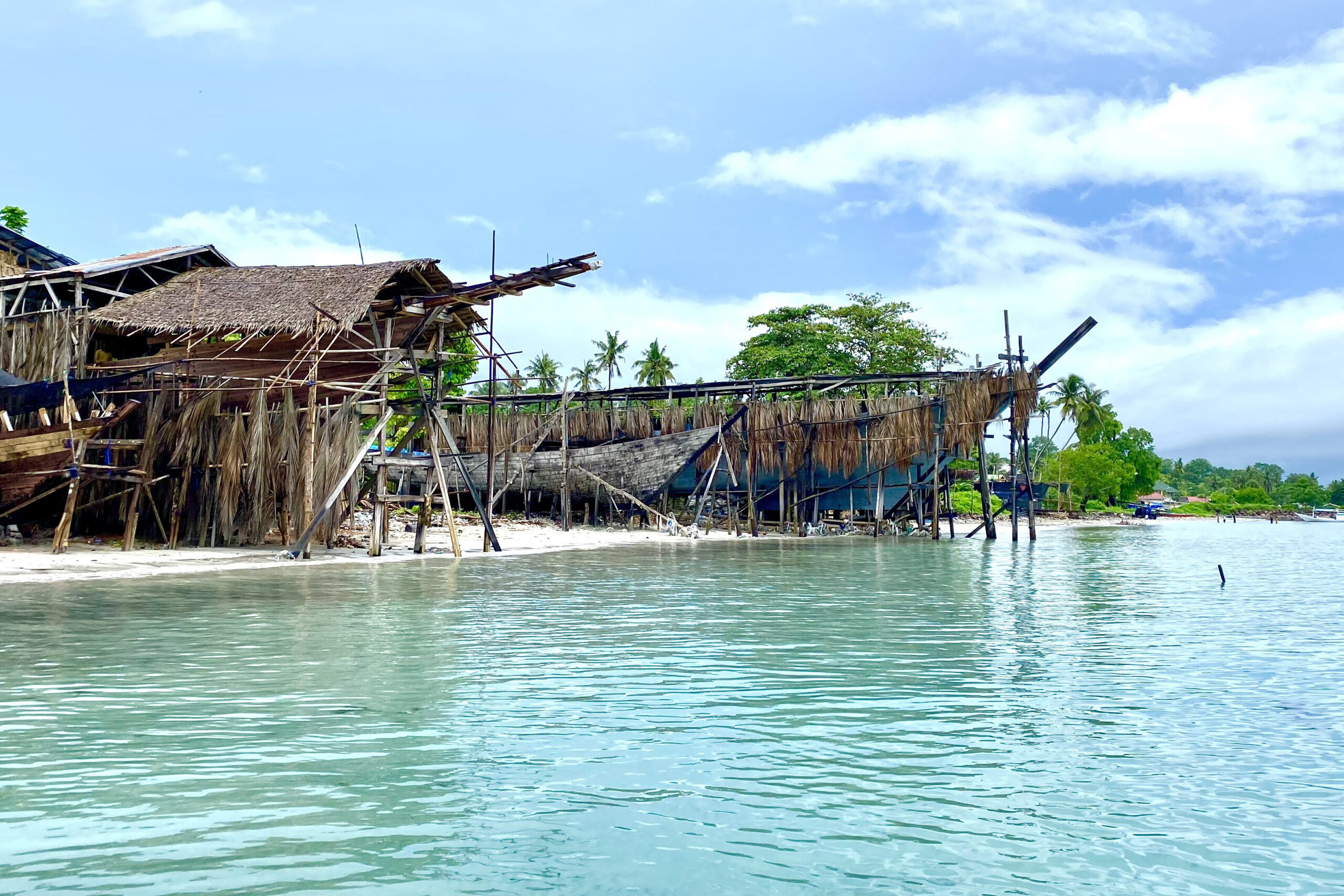
It’s Day 1 of our two-week Indonesian island odyssey and local guide Zulkarnain greets us on the sand and explains that the phinisi here are all designed by Tana Beru’s master boatbuilder (Panritta Lopi in Bahasa Indonesian, the local language).
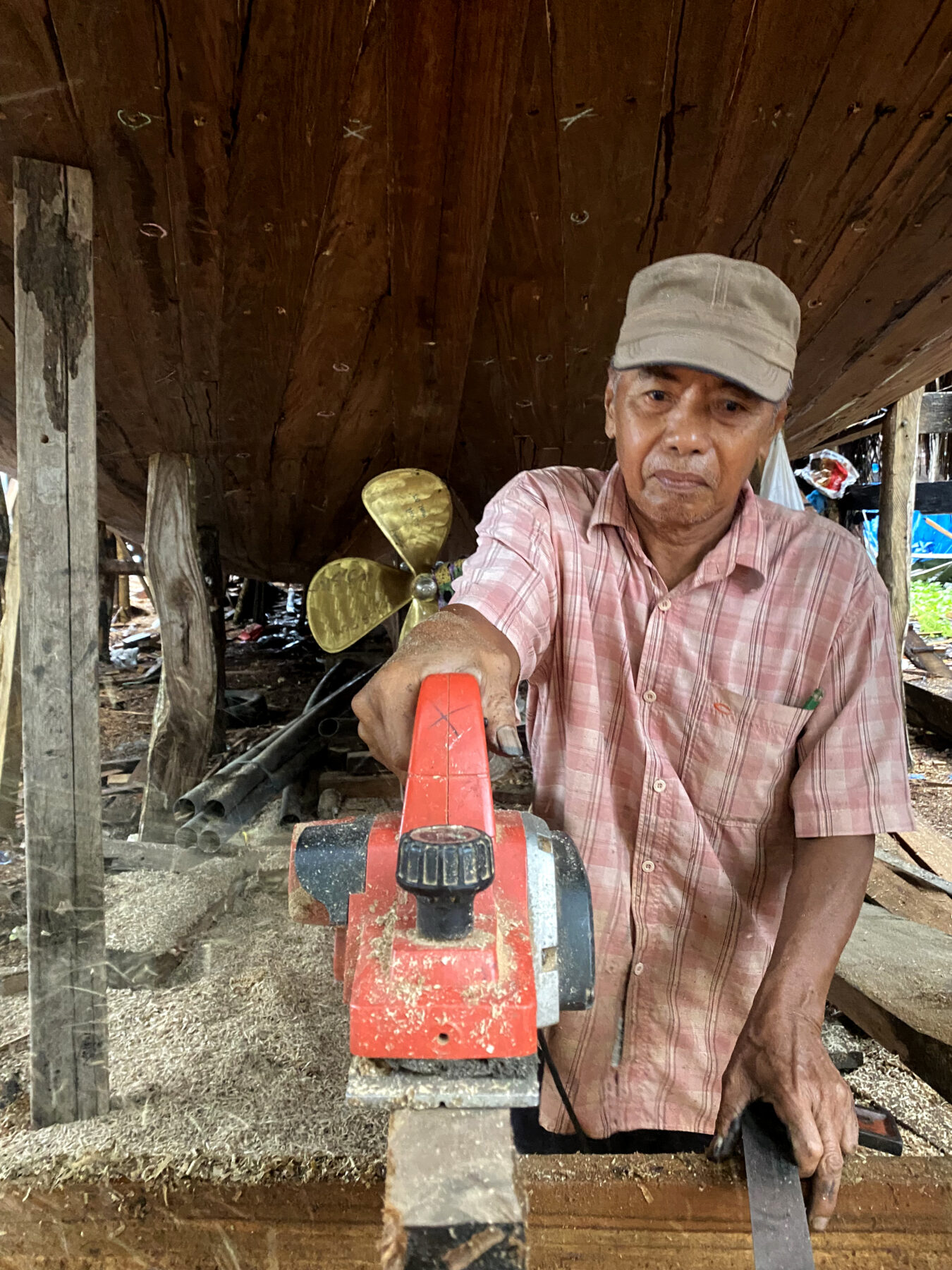
We find him, Haji Abdullah, at the end of our walking tour of the village, which is home to 1100 people. They’re fishing families mostly, which is reflected in the racks of salted and drying fish beside almost every house, and the throngs of wonderfully joyful children, each as curious about us as we are of them.
“This boat, 20 billion rupiah [AUD $1.87 million],” Haj says. “It was ordered in 2019, before COVID. It was 12 billion, but price has gone up because of wait.” I ask Haj what the boats he builds are used for, now the glory days of the spice trade are over, and he says they’re mostly for tourism – live-aboard dive boats, and “for rich people”. But Haj doesn’t mind, because these boats pay for him to explore the far reaches of the world, including the Northwest Passage, a sea route that connects the Atlantic and Pacific oceans through the Canadian Arctic Archipelago.
Zulkarnain says that once a boat is completed, the villagers use the tides to float it, which can take about a month, then the owners can collect it. “We wait,” he says, “until the big waves, on the full moon, wash it out, bit by bit, into the sea.”
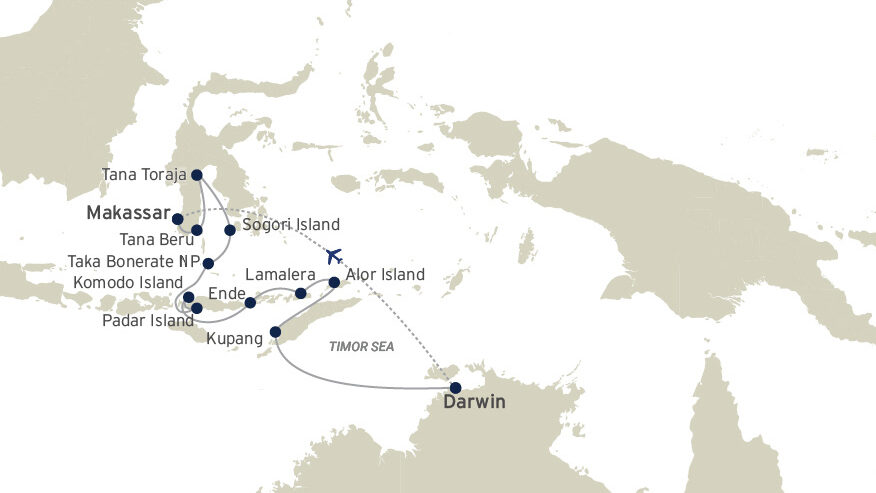
Celebration of death
Most of the 100 or so guests aboard our expedition ship, Coral Geographer, are murmuring about the roadside stalls selling wooden boxes – some white with gilded trim, others ornately carved, and others that are simple and unremarkable. “I’ve never seen so many coffin shops,” one of our party comments incredulously. “You don’t drive down the street in Australia and see coffins.”
It’s Day 3 and we’re aboard five air-conditioned buses taking the slow and winding road from Palopo, the second-largest city in the South Sulawesi province, to Tana Toraja. It’s a 3.5-hour drive into the highlands, where tropical jungle and rice paddies dominate the lush landscape.
Our guide, Arung, explains the proliferation. “The most important ceremony here in Tana Toraja is the funeral – not the wedding, not the christening. People save for years to give their loved one the right and proper goodbye. High-caste people, important people, wealthy people, will slaughter 20 buffalo, maybe many more, at a funeral to feed the village. That’s a lot of money.”
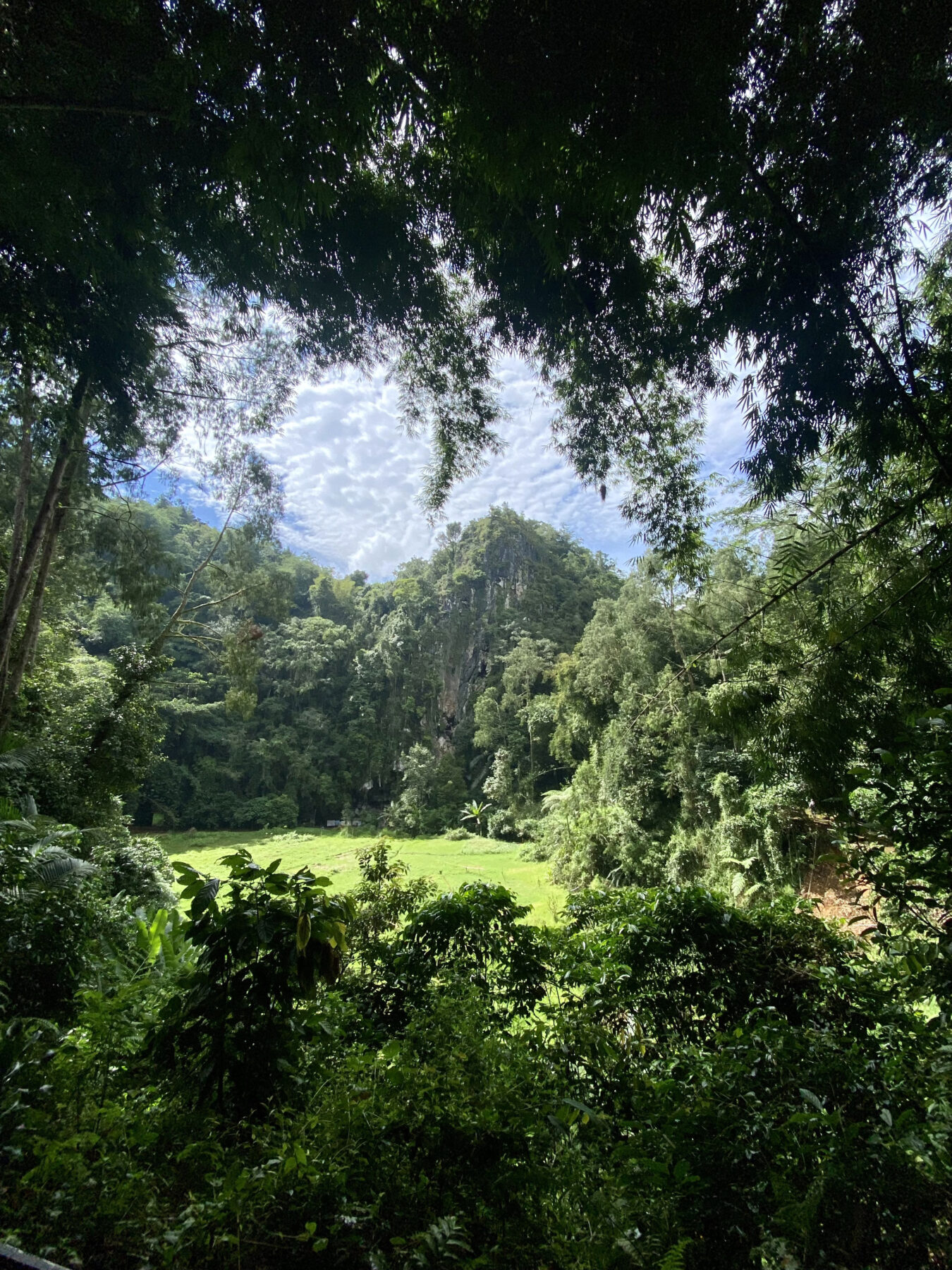
We visit the village of Ke’te Kesu’, where traditional Tongkonan houses look like bowed ships mounted on boxes, all facing north.
“The roof is covered by black palm fibre, the shape looks a bit like a buffalo’s horn and every Tongkonan has to be built facing north,” Arung says. “Local people believe that their ancestors’ spirit lives in the north, and if someone dies, they believe this person’s spirit joins their ancestors there.”
The design of these houses is small and functional. The ground level is traditionally used to keep water buffalo – prized and highly valuable possessions – while the family lives above, sharing three rooms. The front bedroom is reserved for the grandparents, the centre room is the living space and kitchen, and the back bedroom is for the parents and children.
“When a grandparent dies, he or she is embalmed and moved into the parents’ room, where they stay until the family is ready to bury them,” Arung says. “It can take up to a year for the family to have enough money to do this properly.” There is a collective inhalation as Arung explains this, and I wonder, as we all finally exhale, if this time period and close proximity is truly as shocking as we all clearly think. What if it gives the family time to grieve properly? What if it is, indeed, a fitting honour to a life lived in service to one’s family? There are a thousand what ifs, perhaps, from our western culture, which hustles and bustles through life and death.
As we emerge from the Tongkonan, Arung leads us down a cobblestone alleyway, lined with stalls selling local wares, to a towering cliff face. There are coffins here too, embedded in the stone. It’s extraordinary and you can see from the different states of wear that some have been part of this traditional cliff burial site for hundreds of years. A stone staircase is etched into the cliffside, and as I climb I see human skulls atop some coffins and, in a cave about halfway up, life-sized wooden effigies of the ancestors of Ke’te Kesu’. This, too, is part of the ritual – an honour to those who have passed but will never be forgotten. They sit, staring impassively at a world that has, no doubt, changed beyond all recognition. And staring back at them are the faces of people from across the globe who have come to marvel at the traditions of this small, hidden highland village.
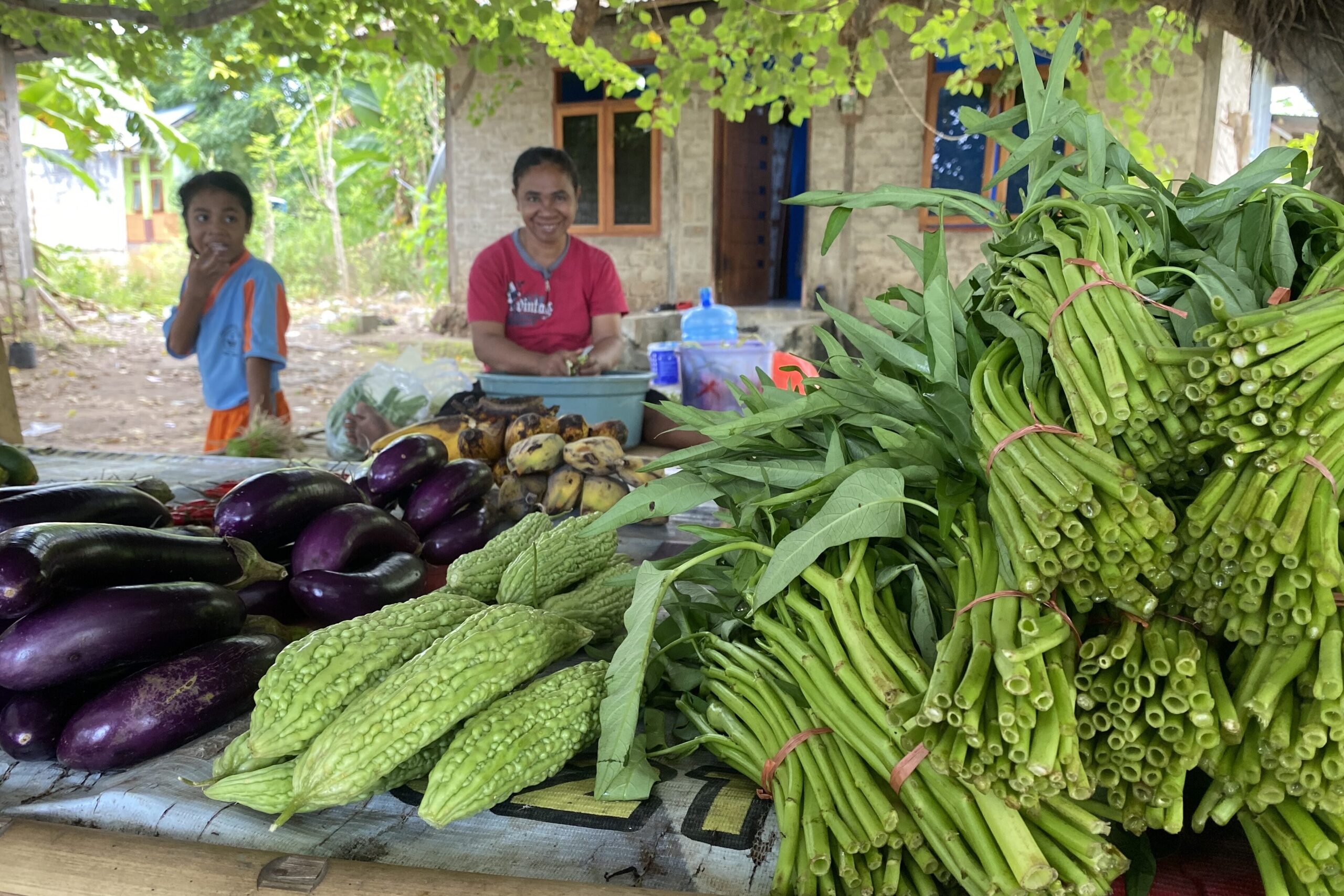
Meeting a Komodo dragon
Sisters Marion and Vicki, from Canberra, and I are the first off Explorer 1 and into the briny. Water babies all three, we skim across the sandy bottom towards a mass of colourful bommies and a reef drop-off, teeming with life.
There’s tropical fish galore and a smorgasbord of coral – plate, fan, staghorn, lettuce leaf, carnation, fox and organ pipe – plus anemones, so many swaying anemones, where I hover for an age marvelling at Nemo and his mates as they rush in and out of the glowing tentacles.
Cruising the drop-off I spot a black-tip reef shark and, not long after, a turtle bobbing along on the surface. I follow for a moment until it lowers its head and fins away – ever so effortlessly beneath me. Marion sees it too and, back on board the ship later in the day, we swap stories of species spotted and of gloriously losing time while floating in the sea.
While there are many cultural immersions during our expedition, it’s these moments, meeting Indonesia’s wildest inhabitants, that especially float my boat.
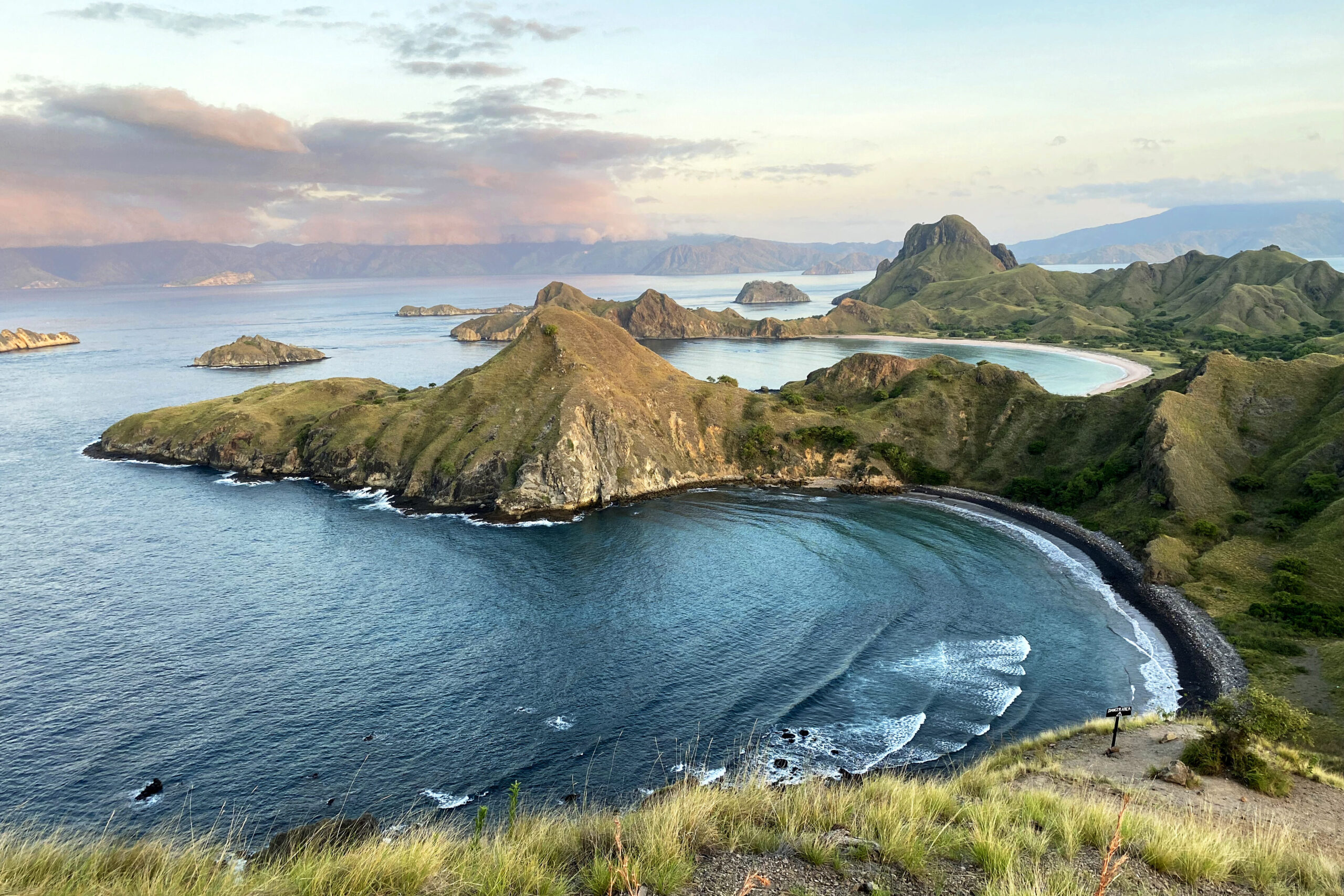
And so it is on Day 8 that I meet, on Komodo Island, the mother of all wild things, the Komodo dragon (Varanus komodoensis) – the world’s largest living lizard species.
The last representative of a relict group of lizards that once lived across Indonesia and Australia, the Komodo dragon can grow to 3m in length and, at its heaviest, weigh up to 160kg. It has a mostly lethal bite that can take up to four days to kill its prey – which can include monkeys, goat, deer and even humans, although their diet is usually carrion.
Talk on the ship the night before and this morning is ripe with, “I hope we see one”, to which the crew assure us we will. But just how quickly surprises us all.
As we motor towards the island, a voice pipes up – “I think that’s a dragon” – and all eyes swivel shoreward. True enough, a lizard is sauntering up the beach. Another, 15m to the right, is fraternising with a local. A long, double-pronged stick is all that’s needed to move the dragon on.
We break into groups and join our guides, each also wielding a “dragon stick”, on a walk around part of the island. Volcanic in origin, it’s the ideal habitat for the lizards, which prefer the tropical forests and baking temperatures. Komodo Island, which is home to 2000 people, plus nearby Rintja, Padar and Flores islands, have a resident population of about 5700 dragons.
While walking, we’re warned to stay on the marked paths. “Don’t wander off,” says our guide, Ari. “A local fisherman was bitten a month ago; he’s still in hospital. He’ll probably lose his leg, but at least he’s alive.”
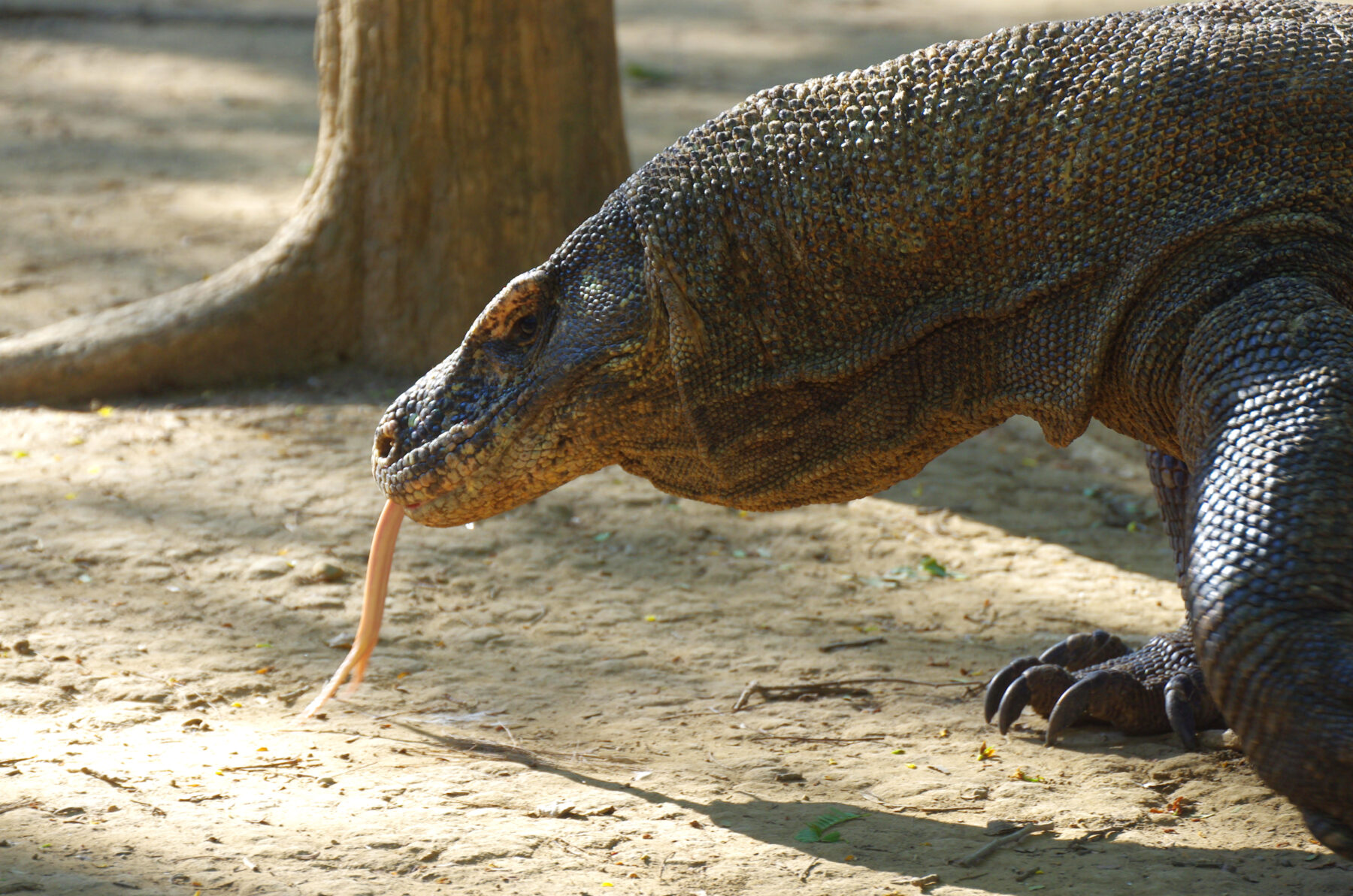
We meet a “grandfather” dragon about five minutes later. He’s huge, and moves with the confidence of a creature that has no predators and grants no favours. Saliva swings from his jowls and his black eyes see all.
He comes to rest in a patch of forest dappled by sunlight and drops to his belly. We marvel. And then Ari announces: “Did you know at least 10 per cent of a mother’s diet comes from consuming its young?” I did not.
“Because of this,” says Ari, “juveniles live in trees. Their claws are designed for climbing, but only when young. They become too heavy to climb trees as adults.”
Incredibly, near the end of our tour, we spot a juvenile – perhaps a week or two old – rushing across the ground and into the limbs of a tree. We marvel again, and because of its diminutive size, are emboldened to take extreme close-ups with our cameras. “Give it a year or two and you’ll be needing pronged sticks instead of cameras,” Ari says, grinning.
Rare cultural experience
The village of Lamalera, on the island of Lembata, is known as the home of traditional whale hunting. The villagers here use simple sailboats and long spears to hunt whales, manta rays and dolphins. It’s a tradition that spans centuries, follows ancient beliefs and taboos and provides food and a living for the villagers, who lead a largely subsistence life. Because of this, the Lamalera are exempt from international bans on whaling.
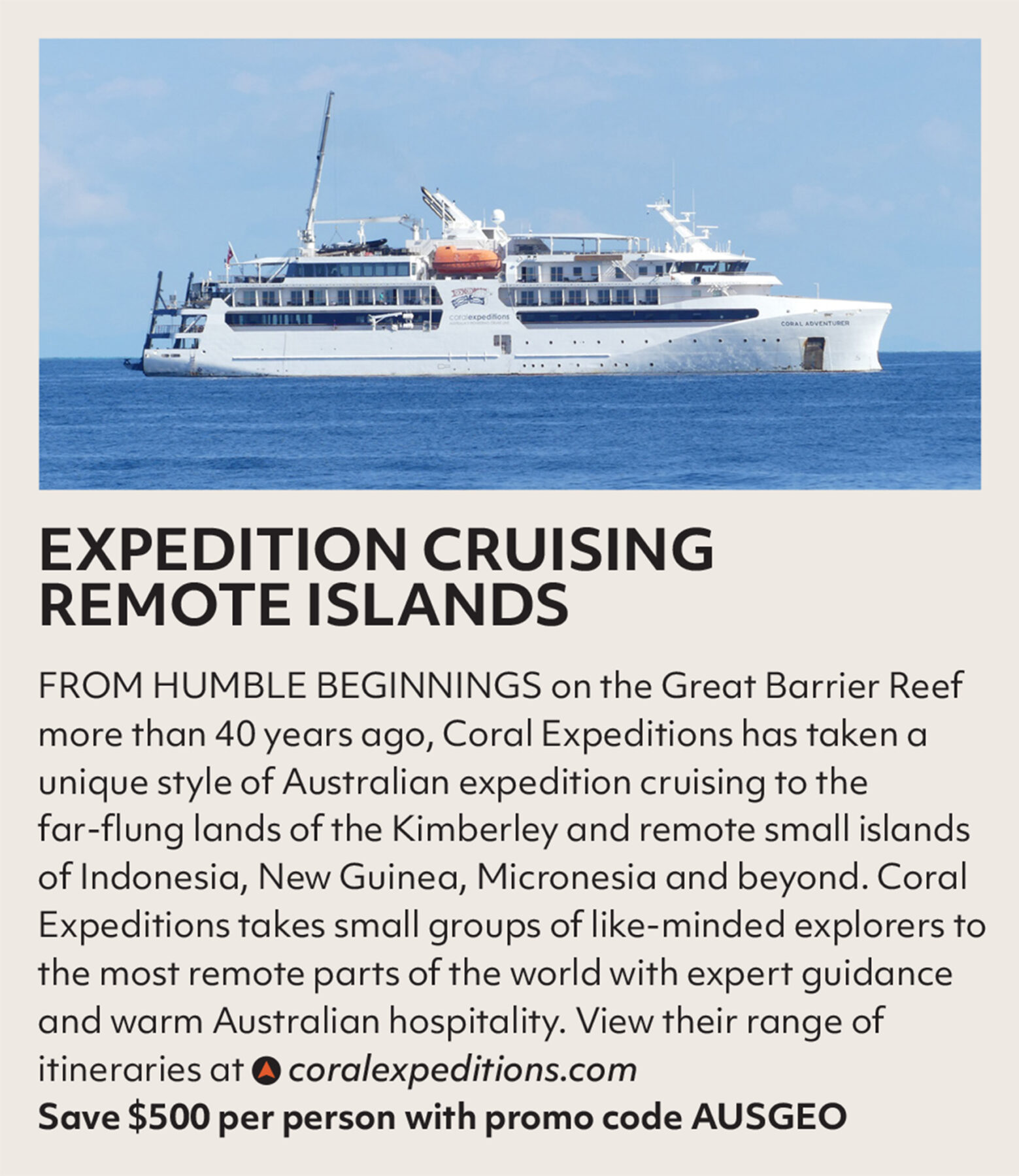
We moor in the waters off the island early on Day 10, and from the deck of the Coral Geographer see the hunters in action, chasing pods of dolphins. We watch from afar as three boats tack and turn, and the hunter at the bow of each launches into the air, spear in hand, in pursuit of their quarry. Many aboard feel conflicted – hunting such graceful creatures in our modern world of plenty seems barbaric. Others, though, see the rhyme and reason of it. And so, in the early afternoon, we board our Explorers and find ourselves bobbing in a sheltered bay not far from the village, waiting for the sailboats to arrive for a mock display of a traditional activity.
It’s impressive, boats whipping across the water and closing in on pretend prey, and when the hunters spring forth and thrust their spears into the water, you can’t help but marvel at their athleticism and bravery.
Afterwards, we follow the boats back to the village and find that they’d had success in the morning – a dolphin is pulled from the hull of one of the boats and, while some watch, is ‘processed’ on the water’s edge. It’s certainly confronting, but also a powerful reminder of why we travel – to broaden our minds, challenge our thinking and open our hearts to other ways of being.
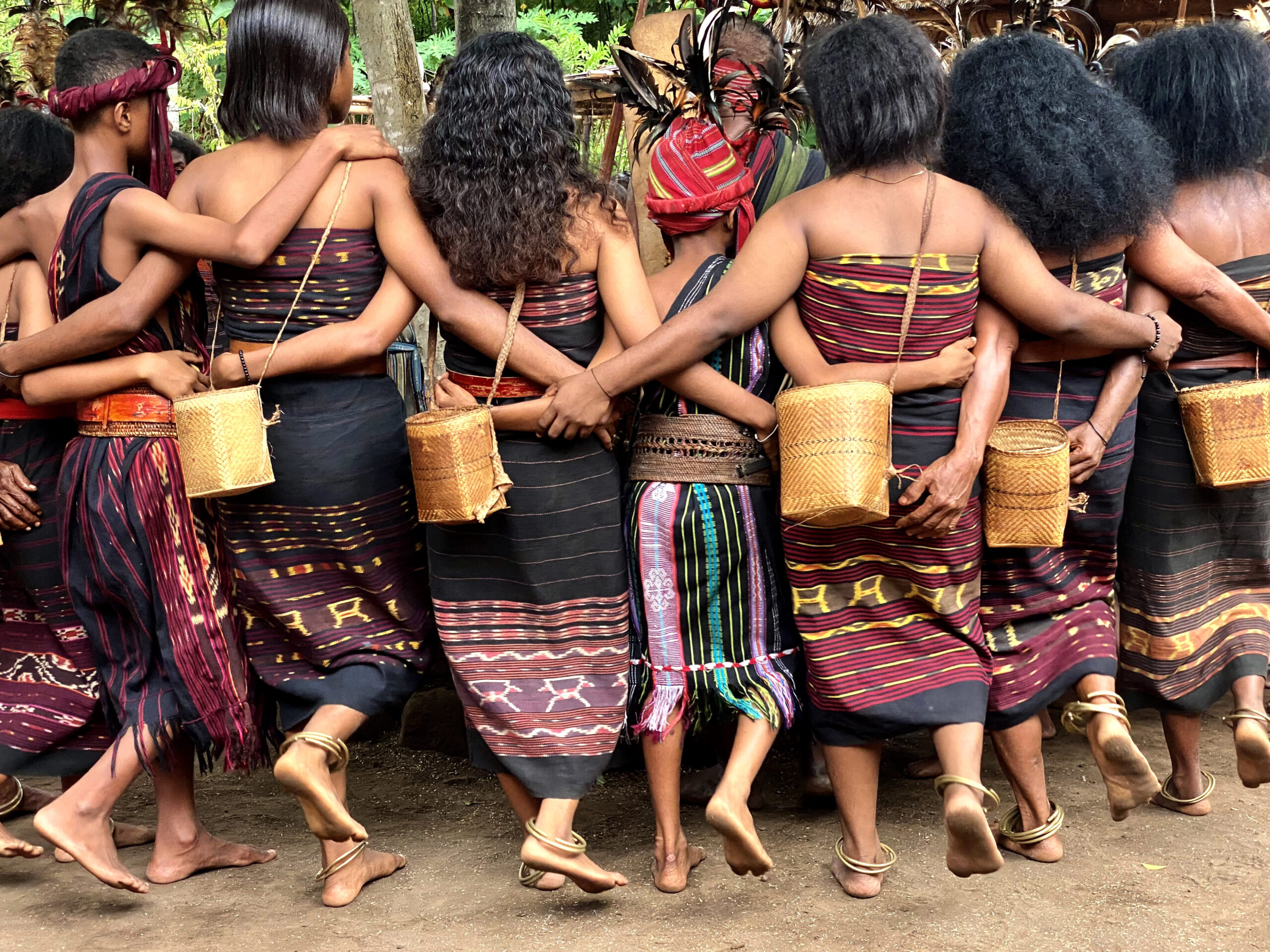
The following day, in the village of Latafui, on the island of Alor, we are reminded of this yet again. The Abui people here also live a traditional way of life. Food is grown, chickens and pigs are raised, fabric is woven, grains are winnowed, and family lines and lives are inextricably intertwined, often under the one roof.
We gather to watch as the community comes together to perform a song and a lego-lego dance, from babes in arms to revered elders, and at the close, we are invited to join in. It’s powerful, profound and deeply moving. Arm in arm, with perfect strangers, we go around and around, smiling and singing.
Liz Ginis travelled courtesy of Coral Expeditions.






